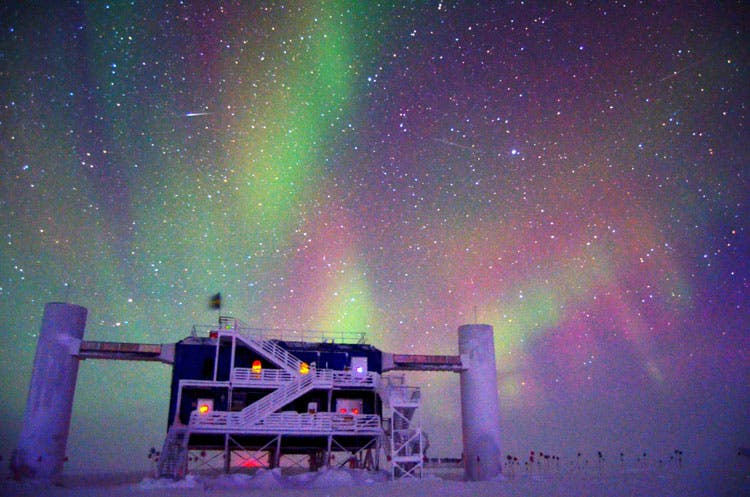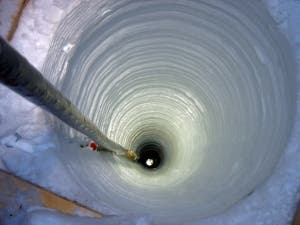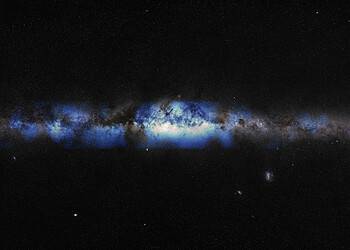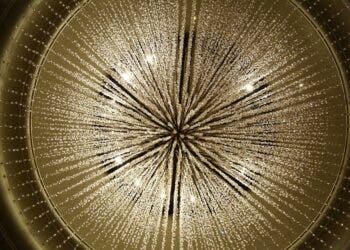These subatomic particles are created in the aftermath of violent cosmic events, like the explosion of a star or interactions with black holes. By capturing them here on Earth scientists can effectively peer into far away corners of the galaxies and tell what event spurred them to travel million of light years.

For decades physicists have been able to observe the neutrinos – almost massless, high energy particles – generated by nuclear reactions inside the Sun, as well as those produced by cosmic rays interacting with nuclei in the Earth’s atmosphere. Neutrinos from further afield prove to be far more difficult to detect because of their high energies. At the same time, because of their inertness, the cosmic neutrinos can pass through clouds of dust and gas, carrying “messages” for billions and billions of miles undisturbed. If you can tap these particles and read their contents, you can effectively learn about what sourced them. In particular, they might be able to reveal the origin of cosmic rays – charged particles. The paths these cosmic rays take to reach Earth are bent by galactic and intergalactic magnetic fields, which obscure their origins.

Nestled inside the Amundsen–Scott research center at the South Pole is an experiment tasked with detecting these elusive neutrinos. At the IceCube telescope, scientists lower 86 cables, each 2.5 km long with dozens of photomultiplier tubes attached to it, inside vertical holes in the ice. These detect a telltale sign that cosmic neutrinos were there, Cerenkov radiation. This is released by secondary particles produced when the neutrinos collide with hydrogen or oxygen nuclei inside the ice.
The IceCube researchers concentrate on muon neutrinos since these continue to travel forward for several kilometers after the initial neutrino collision event. In 2013, two such muons were identified among billions of detected particles – so rare that they deserved names of their own: “Bert” and “Ernie”. The two events, however, were too few for astronomers to locate their source. But now, after a new round that sorted through billions of particles that bombarded their detectors between 2010 and 2012, IceCube researchers identified an additional 21 muon neutrinos, as reported in Physical Review Letters.
“Looking for muon neutrinos reaching the detector through the Earth is the way IceCube was supposed to do neutrino astronomy and it has delivered,” explains Francis Halzen, a UW-Madison professor of physics and the principal investigator of IceCube. “This is as close to independent confirmation as one can get with a unique instrument.”
The neutrino left-over particles observed in the present study have highly similar energies to those sampled in the sky of the Southern Hemisphere. This suggests the neutrinos that hit the Antarctic ice likely came from somewhere beyond the Milky Way – that far.
“The plane of the galaxy is where the stars are. It is where cosmic rays are accelerated, so you would expect to see more sources there. But the highest-energy neutrinos we’ve observed come from random directions,” says Karle, whose former graduate student, Chris Weaver, is the corresponding author of the new study. “It is sound confirmation that the discovery of cosmic neutrinos from beyond our galaxy is real.”






